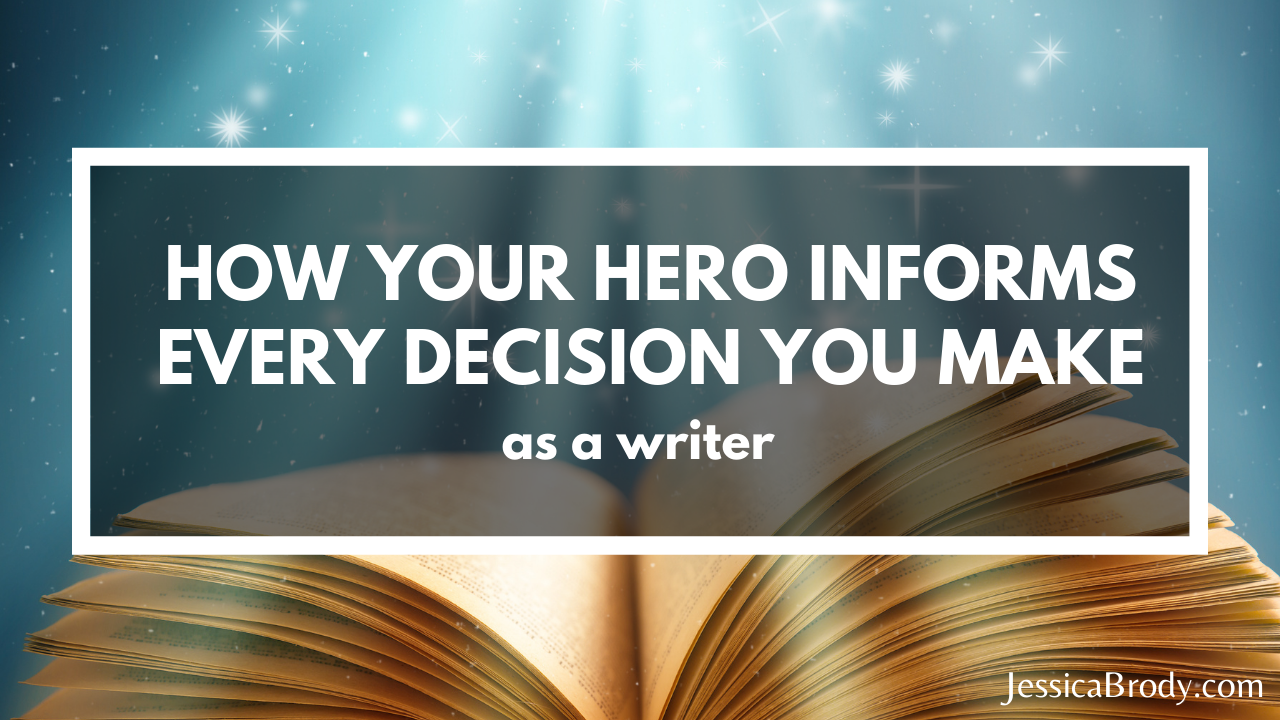How Your Hero Informs Every Decision You Make as a Writer

At the center of your story’s universe lies the answer…
Every solar system has a sun at its center. Every atom of matter has a nucleus at its core. Every swarm of alien space pods has a mothership to guide them all back home. And every story has a center point around which all other aspects of the story revolve.
Any guesses?
Yup. It’s your main character(s).
Better known as the hero of your story.
A huge difference between fiction and real life is that in a fictional story, the entire universe revolves around one person–or a few people if you’re writing a multiple POV/multiple hero story.
Of course, in life, we often wish the world revolved around us. But there’s always some snarky person around to remind us that it doesn’t. Am I right?
In fiction, this egocentric mindset is key to a writer’s success. Placing your hero at the center of the story’s universe informs so many important decisions that you need to make as a writer, like:
- Which direction should the plot go?
- Which scenes should I cut when I revise?
- What subplots/side characters do I include?
- How do I describe the setting/world?
- How do I hone my writer’s voice?
The short answer to all of these decisions is: However it serves your hero!
For example:
Q: Which direction should the plot go?
A: Whatever direction is going to lead your hero toward their ultimate life lesson/thematic arc. The external elements of your plot are what inspire your hero to change, learn, grow, and make decisions. If they don’t directly or indirectly influence those internal shifts, then they will feel inorganic to the reader and don’t belong in this particular story.
Q: Which scenes should I cut in revision?
A: Whichever scenes don’t: A) Tell us something new about your hero, B) Move the plot forward or set up a later plot point for the hero, OR C) Teach the hero something new about their theme/life lesson. Remember my post about the “Lift Out Test?” If you can lift out the scene without requiring a whole vortex of problems to revise, it probably didn’t serve the hero’s story in any meaningful way..
Q: What subplots/side characters do I include?
A: Only subplots and side characters who will in some way teach the hero something they need to learn, illustrate something important about the hero to the reader, or in some way represent the theme/life lesson of the story. That random subplot about the lady next door who finds love at age 98 might be sweet and endearing (and your personal favorite part of the story), but if it doesn’t help the hero discover something about themselves or shed some light on their own life problems, it might have to be saved for another story.

Q: How do I describe the setting/world?
A: Through the eyes of the hero! How do they see the world? What details are important to them? What would they notice? Which elements of the world affect their life? Anything that doesn’t matter to the hero and their plot doesn’t need to be mentioned. And limiting the world to their viewpoint also helps reveal that character to the reader! Win/win!
Q: How do I hone my writer’s voice?
A: By honing in on your hero’s voice. How does this character talk? Think? See the world? Interact? Deal with bad news? Deal with good news? A writer’s voice is only as good as the character it’s portraying. And your writer’s voice is super snarky and sarcastic but your character is a sweet, fun-loving person who sees the best in everyone, you won’t be doing any service to your hero by using that voice. In fact, you’re more likely to just confuse the reader.
I’m often so surprised by how many questions I get from writers in which my response is simply: How does it serve your hero? So many of our problems as fiction storytellers are automatically solved when we start looking at the story through the lens of our main character and how it serves them. Even stories that branch way out into the past and future, into distant lands and far-away kingdoms, into long-ago prologues and end-of-the-world epilogues all need to track back to the hero in some way. Planets can never stray too far from their sun. Atoms are bound by their nucleus. And all alien pods eventually need to find their way back to the mothership. 🙂
Filed under: Save the Cat Tips for Writers Writing Mastery Tagged with: b story character hero how to write characters plot Revision Kickstart (LMAP) revision tips revisions Tips for Writers writing mastery writing tips
-->